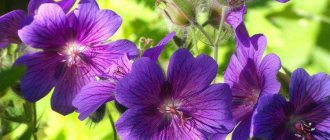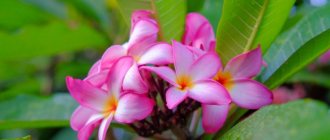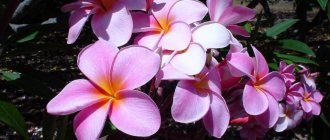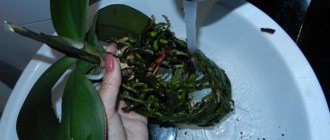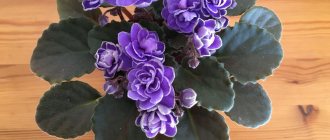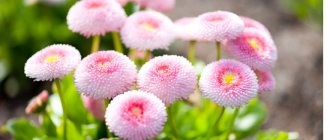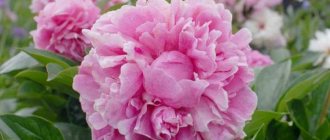Plumeria or frangipani - this plant can rightfully be considered divine. Plumeria flowers have a persistent, exquisite aroma and do not lose their beauty when picked for a month. Tropical islands with a mild and humid climate are considered the homeland of this unusual flower. For the first time, travelers saw this flower in the Caribbean islands. It bloomed on a huge tree, at least ten meters high. And its aroma was incomparable to more than one flowering plant. A feature of plumeria is the ability to change its aroma depending on growing conditions. It is quite difficult to describe the smell of this plant. Each person finds in it the aroma that he wants to hear. For many, the aroma of plumeria resembles the smell of lily of the valley, hydrangea, jasmine, citrus fruits, magnolia or the subtle aroma of spices.
This plant belongs to the Kutrov family. The homeland of plumeria is considered to be South America, Thailand, Bali, Mexico and other tropical islands. In their natural habitat, there are several species of plumeria.
And it grows in the form of a mighty tree with a fleshy crown and large green leaves. Flowers appear in the middle of the plant, and not on the side shoots. And they are dense five-leaf inflorescences that do not have stamens. Their appearance has given rise to many legends and speculations about the origin of this plant. Its peculiarity is considered to be the ability of flowers, when picked, to retain their pristine beauty. The aroma after cutting the flower is also not lost and makes it possible to feel it on the skin for a long time. Flowers are a symbol of Thailand; they are used to make wreaths and decorations for tourists. They are considered the best decoration for weddings and special ceremonies. Their appearance is very important in national culture. The color of plumeria petals, depending on the plant variety, can vary from soft white to bright scarlet, it can be pink or yellow; currently there are varieties of plumeria with two colors in the color of the flower petals.
How does plumeria grow in its homeland?
Plumeria grows in hot, tropical climates. Loves moist air and constantly moist soil. It does not tolerate drying out of the soil and at temperatures below 15 degrees, the plant dies. The maximum temperature in summer is 20-25 degrees, and in the winter rest period it is not lower than 17 degrees. The root system of this plant is quite well developed, there are above-ground roots and a developed underground part. The trunk is dense and strong, withstanding tropical winds and downpours. Very often this plant was planted in cemeteries and churchyards.
A plumeria tree that blooms for a long time should remind people of eternal peace and respect for the departed. It is also called the “tree of eternity”, since even if a young shoot of plumeria is pulled out of the ground, it will continue to bloom.
Beneficial properties of frangipani
Photo of plumeria
The shrub, like many representatives of the Kutrov family, is poisonous. Its juice causes severe skin irritation. When working with bushes, you should wear gloves. However, the appearance of plumeria is very pleasant.
Its purification of the surrounding air and the vitality of the plant are undoubtedly beneficial. In Thailand it is believed to have magical powers. When used for ritual purposes, the plant is believed to attract good luck and prosperity and provide immortality.
How to grow plumeria in your own garden
Many gardeners could not help but become interested in this amazing plant. And the desire to grow it on your own plot is very great. The seeds of this plant, as well as its cuttings, can be purchased at the store or brought from tropical countries yourself. In Europe, plumeria seeds are sold immediately in bags with soil, for ease of growing. The only “but” that stops many gardeners is doubt about the flowering of this beautiful plant. The plant cannot tolerate cold weather and freezing of the soil, the root system instantly weakens and the plant dies. But the solution to this problem is quite simple - you can grow plumeria in a flowerpot and take it from the street in the autumn and winter. Or plumeria grows well in greenhouses and winter gardens, subject to certain conditions.
Feeding
Frangipani responds very readily to the application of mineral fertilizers to the soil. But in order not to overdo it, I always dilute it by half the dosage indicated on the package so as not to burn the roots.
I hope that this article has opened many eyes to this wonderful plant and encouraged you to have this fragrant flower at home.
Growing plumeria from cuttings
- To grow plumeria from a cutting into a young plant, it is necessary to observe certain conditions and know the characteristics of the development and growth of this plant. If you bought a cutting in a store, be sure to inspect it for leaf diseases. If possible, inspect the root system. At home, the plant must be replanted in a fresh earthen mixture; for this you can use light soils for flowering plants or mix one part of humus, two parts of earth and rotted leaves or pine bark yourself.
- The soil for the plant should be slightly acidic. Expanded clay or broken bricks should be placed at the bottom of the container; this will help prevent rotting of the roots with constant watering. It is better to choose a plastic container for planting, since clay containers can injure the roots of a young plant, do not allow sufficient heat to pass through, and they are quite heavy. And plumeria needs to be replanted every year. The earth mixture should be well moistened, after which a young cutting is placed in it.
- If the plant has more than three leaves, this indicates that the plant is in good condition. The young plant is a thick stem with a rosette of leaves at the top. If there are side shoots, this indicates that the plant is not very young and may have undergone flowering. On the stem of a plant you can sometimes see “stretch marks”, a young formation of bark; this is not damage, but is typical for some types of plants. It is better to plant during the plant's dormant period, which occurs from October to March.
Diseases and pests
Improper, irresponsible care leads to the fact that diseases and pests are more likely to attack a weakened plant. Trouble can be recognized by symptoms:
- Plumeria leaves droop - this is the plant’s preparation for hibernation, a natural physiological process;
- Root rot is stagnation of moisture caused by excessive watering (cut out damaged roots, sprinkle healthy areas with crushed charcoal, move the bush to new soil, adjust watering).
- Stretching - poor lighting (move to a brighter place);
- slow growth, wilting - lack of moisture (ample watering, proper watering);
- the buds do not open - the plant is cold (move to a warmer place; in winter you can insulate the roots with a soft, warm cloth);
Sometimes plumeria is attacked by spider mites, lepidoptera, and mealy bugs.
Plumeria care
After planting, the plant needs regular watering and frequent spraying. Plumeria loves warm, settled water for irrigation. Does not tolerate drying out of the earthen coma. The plant is sprayed daily with clean warm water. In the active growth phase of the plant, spray in the morning and evening. In the slow growth phase, once a day is enough - in the morning. The root system of plumeria develops quite quickly, and the growth of the plant itself depends on its development. Plumeria is a tropical plant and with proper care it should be replanted every year. It is better to do this in April. After five years, the plant can be replanted every three years. When replanting a plant, you need to trim the lateral and main roots by five centimeters. This allows the root system to develop and the plant to bloom better. In mature plants that are not replanted, the top layer of soil must be changed twice a year. Throwing out the old soil and replacing it with new. You also need to mulch the top layer of soil of the plant, protecting it from drying out and washing away. You can mulch with coconut fiber or perlite. The plant needs to comply with the light regime. There should be at least six hours of daylight. In this case, plumeria can be in the open sun. If there is not enough light, the leaves begin to turn yellow and appear more lethargic. During the entire period of life, the plant should receive the maximum amount of light. If you take the plant into the house for the winter, then make sure that it stands in the southern room near the window or on the windowsill. The plant does not like drafts and freezing of the soil. If the floor is cold, you can place planks or soft cloth under the container.
During the growth period, the plant must be fed. Fertilizers can be purchased from the store for flowering plants. In the first months of spring, fertilizing with nitrogen fertilizers is necessary. During the summer months, in extreme heat, fertilizing is not recommended.
Plumeria varieties for growing in our climate
In our climate, three varieties of plumeria give the best growing results.
- Red plumeria is the most common plant variety. It has a rather fragile trunk, and requires pruning of flowers after they fade. At the same time, it grows well, grows beautiful, large leaves and quite large bright scarlet flowers.
- Plumeria obtuse is the smallest plant and has the appearance of a subshrub. The leaves are dark green, veiny, sometimes curled. The color of the flowers is predominantly yellow or white with a yellowish tint. An easy plant to grow, most resistant to temperature changes.
- Plumeria alba is a classic type of plant. It looks like a tree with large leaves. It blooms with large, white flowers, which may have a yellow eye in the middle of the flower.
Secrets of plumeria flowering
The main requirement of gardeners is the flowering of plumeria. But this process is long and not always successful. If the plant is grown from cuttings, then flowering occurs after 9-12 months of cultivation. If the plant is grown from seeds, then you will have to wait much longer for flowering, about three years. For successful flowering of plumeria, it is necessary to ensure its comfortable air temperature, proper watering and spraying, fertilizing with fertilizers and crown formation. As a rule, all lateral shoots and shoots that grow on the trunk must be removed. It is worth noting that plumeria has poisonous juice. And all work on crown formation should be carried out with gloves. Plumeria blooms on young shoots of the current year; if they are removed, flowering does not occur. If everything is done correctly, the plant will delight you with abundant color and aroma for a month or more. Flowers with a unique aroma and color will give the plant a solemn and festive look.
Rest period
During the winter months, plumeria begins a dormant period. Some varieties “rest” for up to 6 weeks. At this time, it is not advisable to apply fertilizing and fertilizers to the soil, or to carry out frequent watering and pruning. You should also monitor the air temperature. It should not fall below +14 degrees.
Old foliage partially dries out and falls off - this is a normal phenomenon in winter, and not a sign of disease. In spring, young shoots and buds will begin to appear in its place. Some specimens of ornamental shrubs do not hibernate at all. All winter they continue to actively grow and bloom. They need additional artificial lighting.
We grow plumeria in a flowerpot or tub
Growing plumeria in flowerpots allows the plant to be in the fresh air in the countryside or in the garden during warm periods. The pot with the plant should be placed in a well-lit place, making sure to place a board or other flat surface under it. This will provide the plant with protection from ants and other insects. Spraying and watering are done daily, even several times a day. With proper care, you can grow a tree or shrub up to two meters high. It is necessary to inspect the leaves of the plant daily, especially from the inside. And to avoid the plant becoming infected with spider mites, it is better to treat it with an insecticide. During the budding and flowering phase, you cannot spray the buds, only the leaves. At the end of flowering, the plant needs pruning.
Interesting fact about plumeria . This plant has another name - frangipani. It received this name thanks to the famous Italian perfumer and nobleman, who was the first to reveal the amazing properties of the essential oil of this plant. And based on it he created the first plumeria scent. The aroma later gained worldwide fame. And now it is considered one of the most powerful aphrodisiacs. This smell brings satisfaction and tranquility to a person, introducing a note of peace and pleasure.
Join our Facebook group
